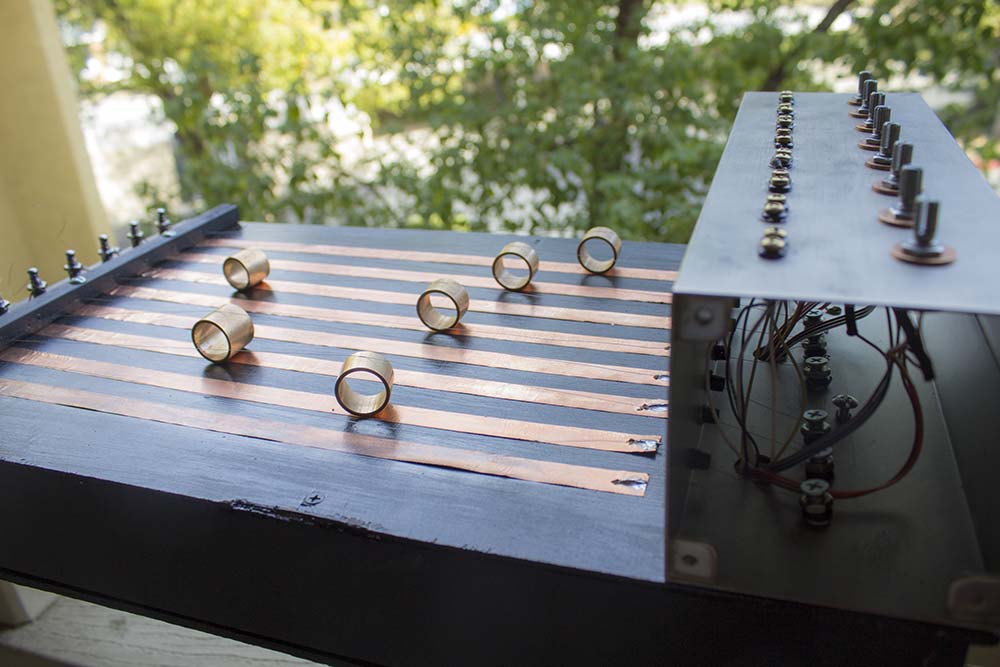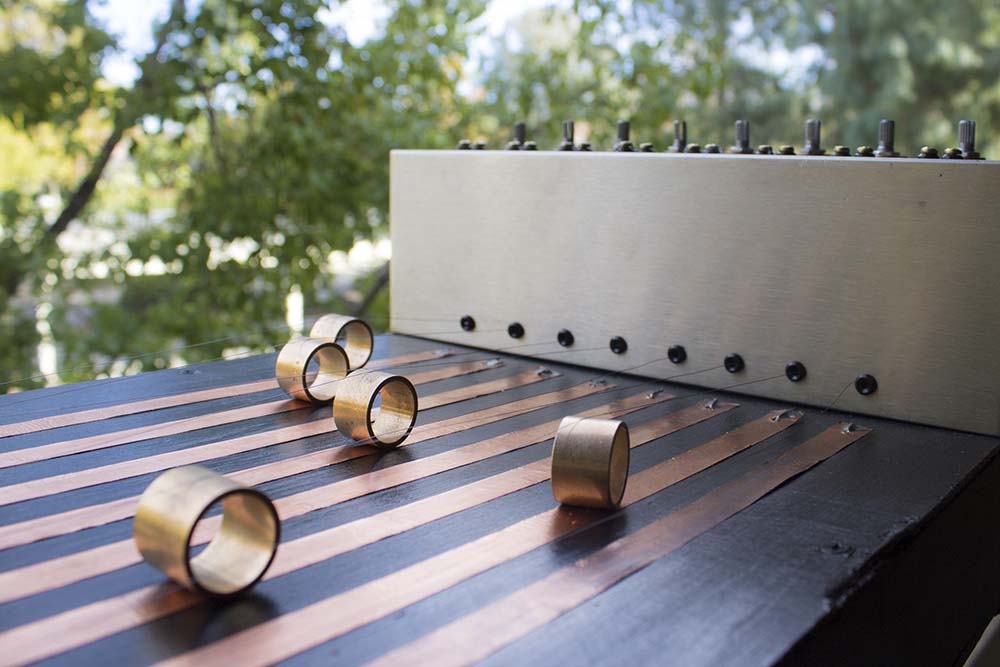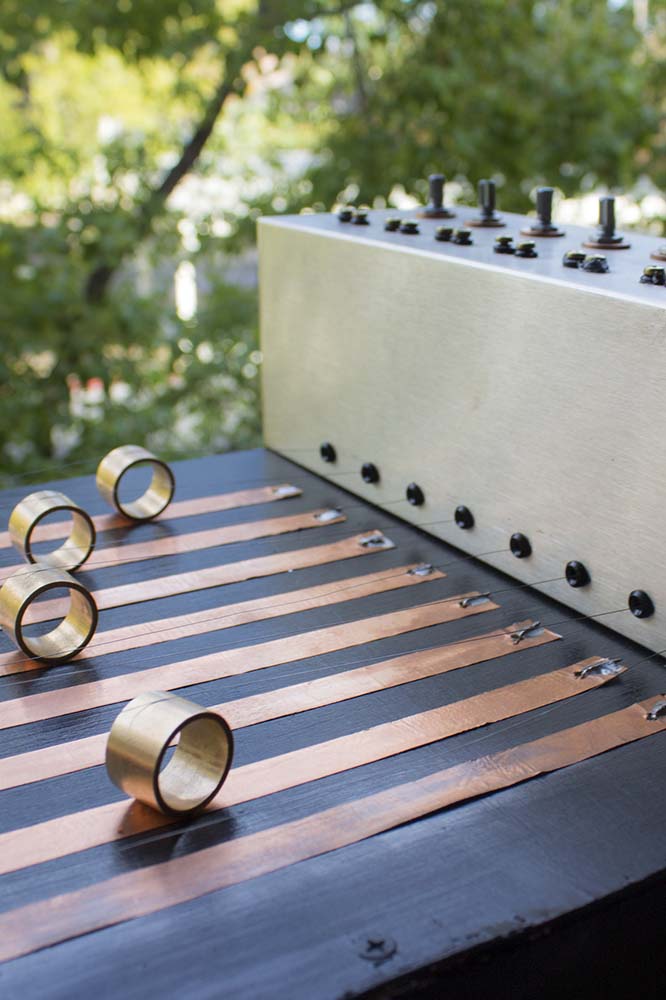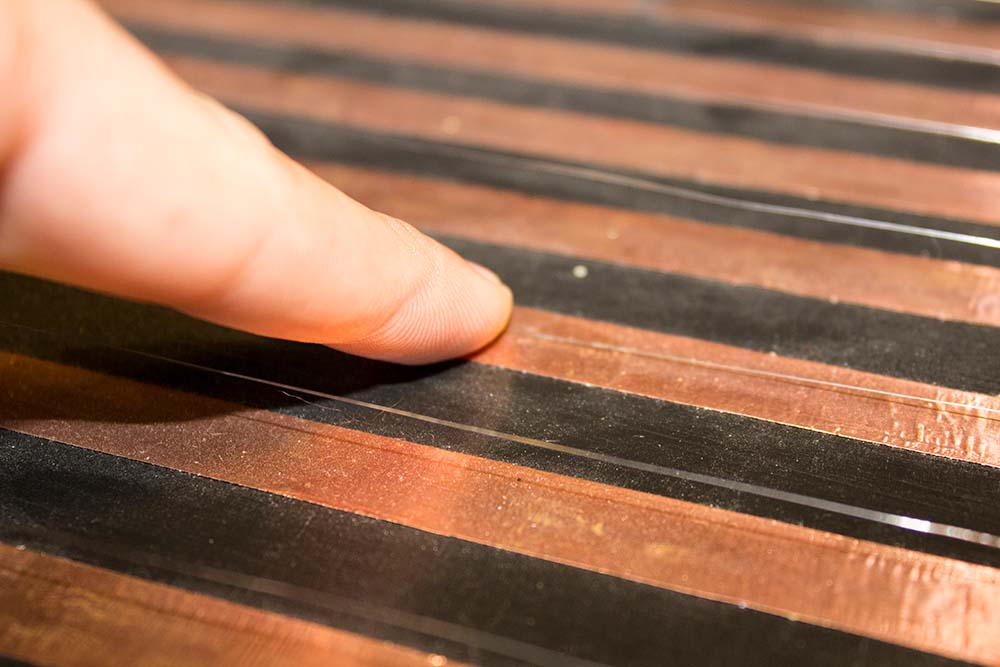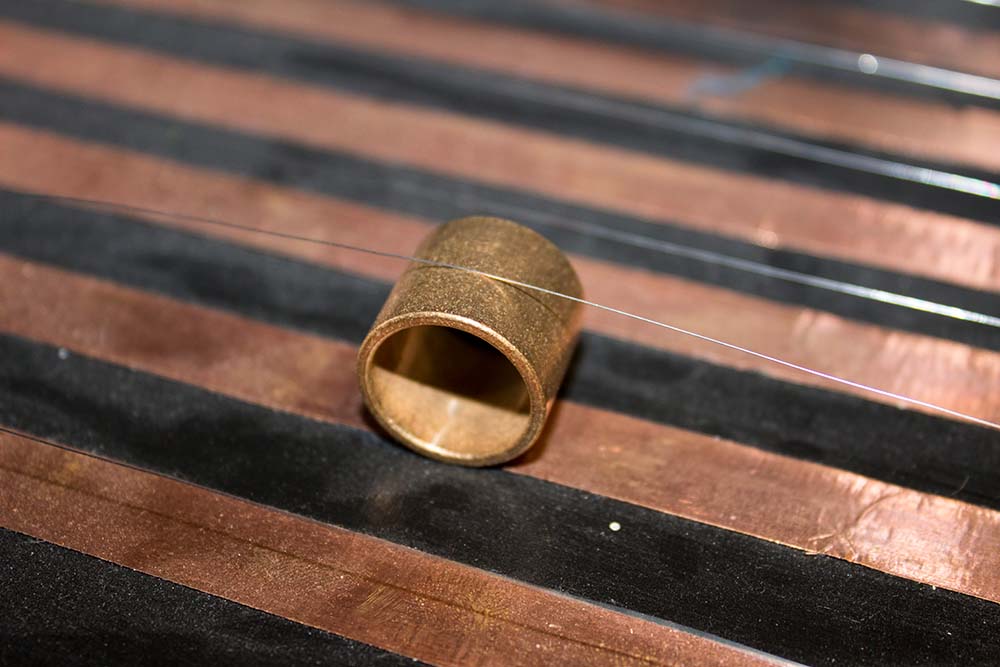Discovery Synth
Project Overview
the Discovery Synth (Discovery Synth) as an example of a musical interface which
applies techniques of deconstructivism and abstraction to its design. The interface’s buttons and
potentiometers seek to replace the mechanical abstractions that separate our bodies from the
electronics with the body of the user.
The Discovery Synth project is a response to the notion that raw electricity holds little value in our society.
While lightning and static electricity are merely minor inconveniences, electricity can work wonders when
employed through appropriate tools and electronic components. In modern times, the power of electricity
primarily originates from the design and implementation of electronic components, and we usually interact with
it through physical abstractions or tools that electronically modify the underlying circuitry. For instance,
when we press the popcorn button on a microwave, it physically separates us from the electronics that operate
the microwave. However, when pressed, the button internally connects two points in the circuitry, causing
electrons to flow and signaling the microwave's logic that the popcorn button has been pressed. The Discovery
Synth project aims to bring users closer to the electronics they control, much like Peter Blasser has attempted
to do in his work. The project seeks to eliminate physical constructs, such as the popcorn button, that separate
the body from the electricity that governs the interface.
Project Overview
The Discovery Synth is a versatile Raspberry Pi interface designed for installation and experimental music performance. It boasts an array of features, including eight buttons, sixteen potentiometers, stereo output, and microphone input, all powered by an onboard rechargeable battery through a USB cable. A custom cape reads the values from the buttons and potentiometers, while Pure Data runs on the Pi to make sense of the sensor readings and serve as the audio and video synthesis engine for the device. This Raspberry Pi cape was created in collaboration with Clay Chaplin for the CalArts AV Ensemble, who built their own versions of the Discovery Synth using their preferred components and enclosures. More information about Peter, the inventor of the Discovery Synth and his work in circuit bending, can be found on our website.The author's iteration of the Discovery Synth features eight custom buttons and sixteen voltage dividers, including eight standard mechanical potentiometers and eight custom ones. It is crafted from reclaimed materials, with the buttons and pots housed in an old aluminum lamp base, the main body made of wood found on the side of the road, and the tuning pegs salvaged from an old guitar.
The Raspberry Pi 2, which acts as the brain for the Discovery Synth, has twenty-six General Purpose In/Out (GPIO) pins that can operate as either inputs or outputs at a logic level of 3.3V. While these GPIO pins are sufficient for many circuits, they have limited capabilities, being strictly digital and with minimal current sourcing capabilities compared to an Arduino Uno microcontroller. The Discovery Synth Cape21 overcomes these limitations by providing the Raspberry Pi with input capabilities that reflect those of an Arduino or similar microcontroller, including the ability to read analog values from sensors and expanding the available number of usable inputs. This is accomplished through the use of two MCP3008, 8-channel, 10-bit A/D converters.
Buttons
The DS’s buttons are designed as minimally as possible with no physical mechanism separating the action of pressing from the flow of electrical current within the component. Every part of the design is functional and vitally important for the device to work properly. The process started conceptually by distilling how Normally Open (NO) electro-mechanical push buttons function; they internally contain two conductive paths which are electronically separated when no external force is applied. When a NO pushbutton is pressed, two parts of the circuit are joined through mechanical means allowing current to flow from one lead to the other. A Cape for a Raspberry Pi is analogous to a Shield for the Arduino platform. It is a small PCB designed to be attached to the GPIO headers of the Raspberry Pi and provides some sort of additional functionality usually though the integration of IC’s and/or discrete electrical components.The DS’s buttons follow the NO model providing no electrical connection between the two leads while the buttons are in their resting state but allowing current to flow when the buttons are pressed. To refrain from using any unneeded abstractions the buttons consist simply of two conductive bolts, spaced a few millimeters apart. The bottoms of the bolts are soldered to lengths of wire which are connected to the Discovery Synth cape. One of the bolts is connected to the 3.3v power rail while the other is monitored by a GPIO pin on the Raspberry Pi. By pressing on the bolts with a finger, the interactee fathers an electrical connection - through their skin - between the two bolts.
Potentiometers
The Discovery Synth interface features a total of sixteen potentiometers in two banks of eight. Each of the
two banks contain distinctly different types of potentiometer. The first bank, which this
document will refer to as the knob-style potentiometers, are typical store-bought mass produced
potentiometers and are mounted in the metal portion of the interface next to the buttons. The
second bank, or the slider-style potentiometers, are custom designed just for the Discovery Synth and do not
look like the bank of knob-style potentiometers. The goal when designing the slider-style
potentiometers was to remove the physical abstraction wedged between the human and the
circuitry in order to create a direct interaction: just like with the buttons discussed above.
A potentiometer is mechanical component that functions electronically as a variable
resistor. Potentiometers, or pots as they are often called, have three leads they use to connect to
the circuity around them. The outside leads are connected to the ends of a resistive material,
while the inside lead is connected to the wiper. To adjust its point of contact
with the strip the wiper is typically moved using mechanical force to come into contract with the
strip at different points producing a varying resistance between the wiper and the outside leads.
A common application for potentiometers, and how the Discovery Synth is using its
potentiometers, is to connect the component to a circuit so it functions as a voltage divider. By
connecting one of the two outside leads of the potentiometer to the circuit’s power, the other
outside lead to ground the center wiper lead will produce a variable voltage depending on its
position.
The Discovery Synth slider design functions identically to the conventional potentiometer described
above; it has a strip of resistive wire, specifically Kanthal, that comes into contact with
conductive copper tape at different locations producing a variable voltage at the wiper node.
What makes the slider novel is not how it behaves electronically, but is instead its construction.
The Discovery Synth slider, just like the buttons, contains no parts that are not completely
necessary to it functioning: there is no casing, levers, springs, or anything else. The copper tape
exposed on the outside of the DS’s wooded case serves at the sliders wiper and is connected to
an A/D converter found on the Discovery Synth cape while the Kanthal wire suspended above is the resistive
strip and is connected to power on one end and ground on the other.
One of the primary duties of the Discovery Synth cape is to provide analog readings from the
potentiometers to the Raspberry Pi, which normally is limited to digital readings by the
capabilities of its GPIO pins. This is done with two sixteen pin, MCP3008 ICs. The MCP3008,
manufactured by Microchip Technology Inc., provides eight channels of 10-bit resolution A/D
converters, can be controlled over SPI, and operates on a voltage range of between 2.7V and
5.5V.[70] With the help of these IC’s, the Discovery Synth reads a high value from the slider when the user
presses its wire down close to the aluminum portion of the interface and a low value when held
down on the opposite side.
A pecurality of this design becomes apparent when the slider is not being pressed. With
no external force to bend the wire down the Kanthal moves to a resting position ½” above the
interface, breaking its connection with the copper-tape wiper below. This results in the Pi
receiving a reading of “0” for that channel. In this way, the sliders do not hold their last value as
a typical potentiometer does and effectively function as “normally-open potentiometers”.
Meaning, the sliders only return values when physical force is applied to them, just as a
normally-open pushbutton will only return a value when pressed. This quirk is desirable in some
circumstances, especially working well for controlling effects, filters, or some sample playback
parameters. In compositions with parameters that demand the ability to hold and maintain an
intermittent value, they have to be mapped to the standard store bought potentiometers. To
partially offset this limitation, the interface is often presented with several copper pipe segments.
The pipes are used to maintain an electronic connection
between the wiper and Kanthal wire allowing the performer to hold intermittent values on with
the components. However, the pipes are not a perfect solution. They work well for holding
values, but a awkward when increasing or decreasing a value and overall are clunky to use.
The Discovery Synth project succeeded in creating new ways to interact with familiar electronic
components. Both the buttons and sliders designed for the interface, while maintaining the
electronic functionality of the component they are named after, approached their construction in
a different way. The Discovery Synth works well when used by the author, but proves difficult for those
unfamiliar with the interface. Especially with the sliders, which look like guitar string and invite
users to strum or pluck them, folks struggled to figure out how to interact with the device. That
being said, clarity and transparency are not declared tenants of the project and overall the project
is considered a success.
References and Related Works
[68] M. Puckette and others, “Pure Data: another integrated computer music environment,”
Proc. Second Intercollege Comput. Music Concerts, pp. 37–41, 1996.
[69] “Raspberry Pi GPIO Pin information.” [Online]. Available:
http://www.thebox.myzen.co.uk/Raspberry/Understanding_Outputs.html [Accessed: 16-Nov-2016].
[70] Microchip, “MCP3008 Datasheet.” Microchip, 02-Jan-2008.
Related Works
The discovery synth was purpose-built as a physical interface of the Raspberry Pi audio-video synthesiser I developed during my MFA studies at CalArts to realising sonic art installations using the platform. This interface was used for the installation Yin-Yang which is discussed on this page HERE.
Furthermore, I have written on topics similar to this work including interaction with electronics and technology within sonic art HERE, and the use of circuit bending and hardware hacking techniques to create novel interfaces and installation scenarios HERE.
